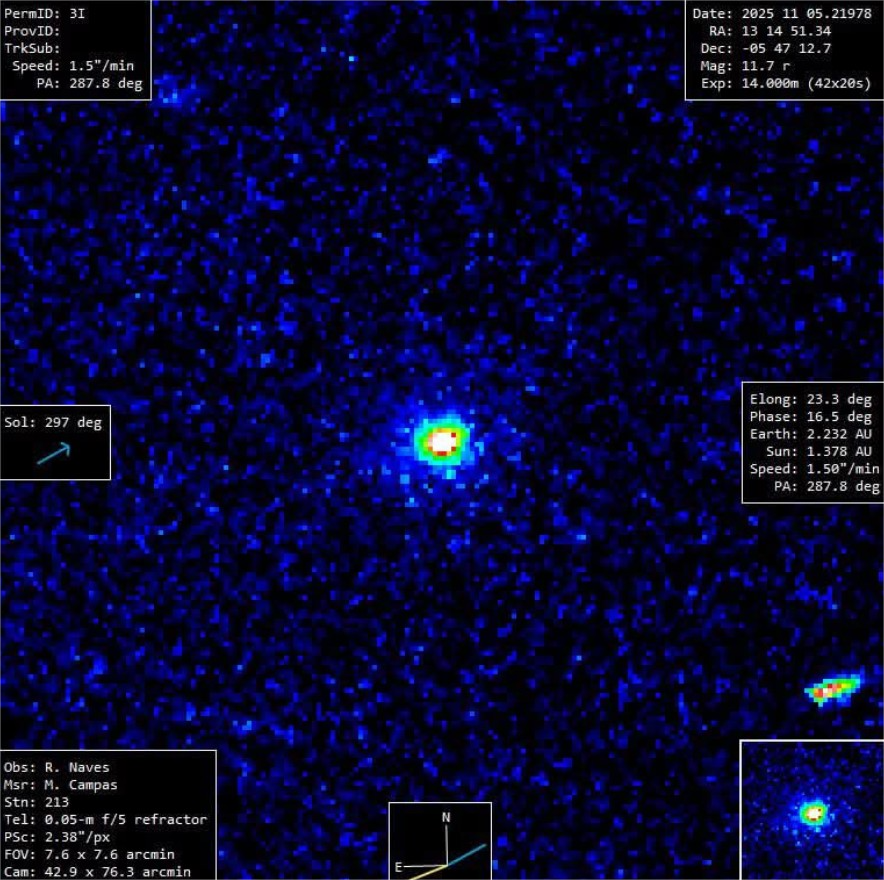Remember when a strange, elongated object named Oumuamua zipped through our solar system, sparking a flurry of scientific debate – and some truly wild theories? Well, get ready for a sense of déjà vu, because another interstellar visitor is keeping astronomers, and especially one prominent Harvard professor, on the edge of their seats.
Meet 3I/ATLAS, the latest enigmatic object from beyond our sun’s gravitational embrace. It’s been closely watched, much like its predecessor, for any signs that might hint at its true nature. The big question on everyone’s mind was: what would happen after it made its closest approach to the sun? Typically, comets, which are essentially dirty cosmic snowballs, put on a spectacular show of outgassing, developing a bright coma and a flowing tail as solar radiation heats their icy surfaces. But with 3I/ATLAS? The suspense continues, because the tail is still conspicuously absent.
The Tailless Wonder That Defies Expectation
For celestial bodies originating from the frigid outer reaches of star systems, a tail is practically a calling card. It’s the visual evidence of volatile materials – water ice, carbon dioxide, methane – sublimating directly into gas, pushed away by solar wind to form that iconic, luminous streak. This outgassing isn’t just pretty; it also subtly affects a comet’s trajectory, a phenomenon astronomers carefully account for.
The fact that 3I/ATLAS has passed through the fiery embrace of our sun, warmed up considerably, and yet shows no significant tail is, to put it mildly, unusual. It immediately raises questions about its composition. Is it purely rocky, like an asteroid? Or perhaps something even more exotic, devoid of the typical frozen volatiles that characterize our cometary neighbors? This observed lack of a tail strongly suggests it’s not your garden-variety icy comet, making it a truly intriguing object for study.
Loeb’s Long Shadow and the Interstellar Enigma
This is where Professor Avi Loeb of Harvard University steps into the spotlight once more. Loeb, of course, famously posited that Oumuamua’s odd shape, unusual trajectory, and lack of outgassing could hint at an artificial origin – perhaps even an extraterrestrial probe. While controversial, his ideas have undoubtedly fueled public interest in these interstellar wanderers.
With 3I/ATLAS exhibiting a similar defiance of cometary norms, the whispers about non-natural explanations are bound to grow louder. While no one is jumping to conclusions, the patterns are undeniably thought-provoking. “It’s like the universe is sending us another cosmic riddle, tailor-made for our generation to unravel!” as one enthusiastic observer put it. Whether it’s a completely new class of natural object or something far stranger, 3I/ATLAS offers a fresh canvas for scientific speculation and discovery.
What Comes Next for Our Mysterious Visitor?
So, what does this absence of a tail truly mean? It certainly doesn’t prove alien technology, but it does significantly narrow down the possibilities for its natural origins. Astronomers will be meticulously analyzing every shred of data gathered during its close approach, searching for any subtle clues: changes in brightness, slight deviations from gravitational predictions, or any spectral signatures that could reveal its chemical makeup.
The quest to understand 3I/ATLAS is far from over. It’s a compelling reminder that our universe is constantly surprising us, and that sometimes, the most exciting discoveries are found not in what we see, but in what’s conspicuously missing. As 3I/ATLAS continues its journey out of our solar system, it leaves behind a rich tapestry of unanswered questions, pushing the boundaries of our cosmic curiosity.
We’ll be watching, along with Professor Loeb and countless others, eager for the next chapter in this interstellar mystery.




